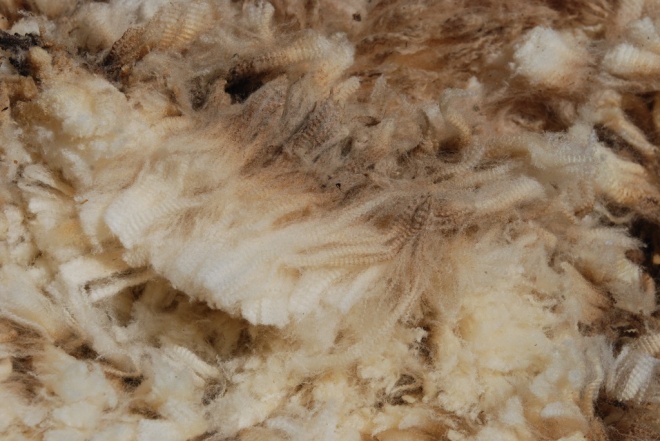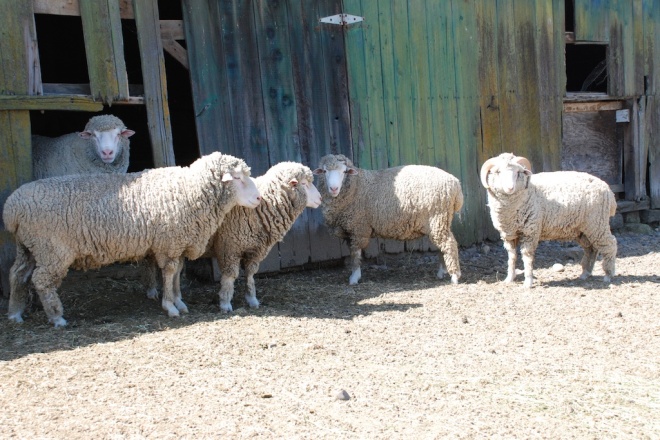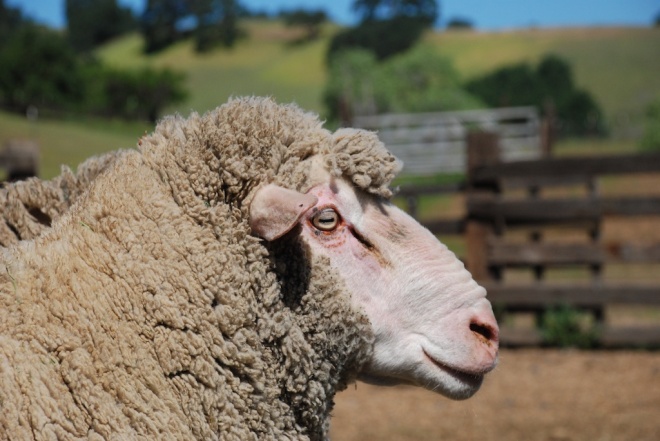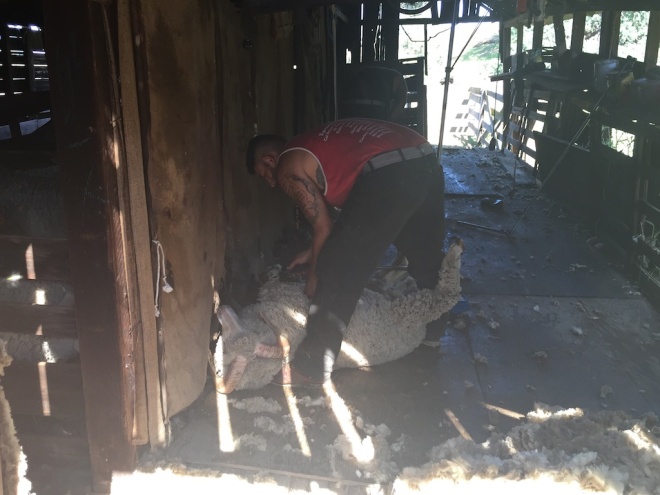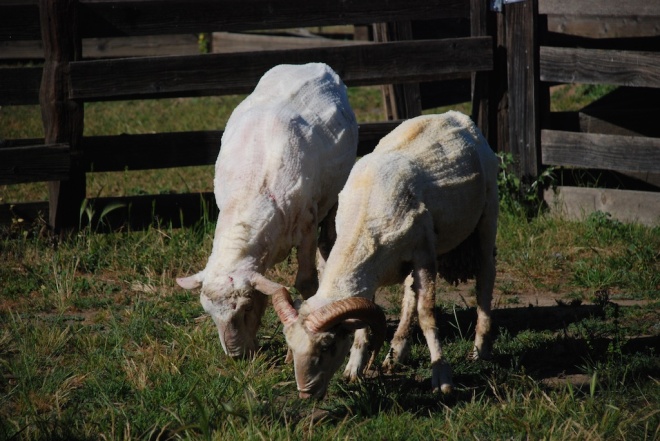I had plenty of catching up to do after the Estes Park trip described in the last 4 blog posts. These photos were all taken last Wednesday, two days after we got back.

We really needed to irrigate. We were about 2 weeks behind because we didn’t want to irrigate before the trip. The water comes into our property just off the top left near the blackberries. In this photo it is running down the ditch and just starting through the culvert.

The vets were here to issue CVIs (Certificate of Veterinary Inspection) for the sheep going to Oregon the following week (now in two days). I asked them to look at a couple of other sheep while they were here. Jade was noticeably skinny even before lambing–a time when many of the sheep are putting on weight. Dr. Urbano thought that maybe her teeth had sharp points that irritated her mouth so she didn’t spend as much time chewing her cud as she should.

She rasped Jade’s teeth and we’ll see if she starts to put on a little weight.

After the vets left I spent most of the day finishing up with fleeces so I could deliver the wool to the mill for processing. I have a few fleeces and a few one-pound lots listed on the website now. I need to check the barn because I lost track of the paper where I wrote which fleeces are still out there. So there may be more to list, but I’d better check first.

These are the bags I delivered to Valley Oak Mill on Thursday. The wool is sorted into black, white, gray (mixed fiber that I can’t separate), and britch.

These are some 3/4 lb and 1 lb lots that I saved for Siobhan’s Vegetarian Sheepskin class to be held at Lambtown in October (look under Saturday classes) and later in the year here. I will also bring back my felted wool wreath class so some of the wool is saved for that.

These are fleeces I brought back from the Estes Park show because I wanted to show them at Black Sheep Gathering. I took them out of the bags and reorganized and rolled them up again. These are some really nice fleeces. I may have to bring one back home with me!

A small bag of wool that I’ll wash here and then dye if it isn’t clean. The color in this wool is left from the marking harnesses the rams wear during breeding season.

Here is what my hands looked like after working through all this wool.

Unfinished business. I have lots of skulls to try and clean up better before selling the. That’s a whole other story.

I brought back new sheep coats from Estes Park. I got several different sizes to try them out. These are from Rocky Sheep in Colorado.
I’ve been doing a lot more catching up but it wouldn’t be a very good blog post to just show photos of me at my computer all day…that’s where I’ve been.

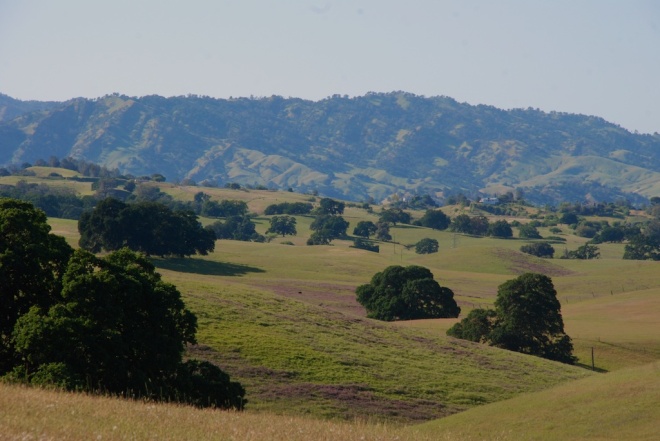
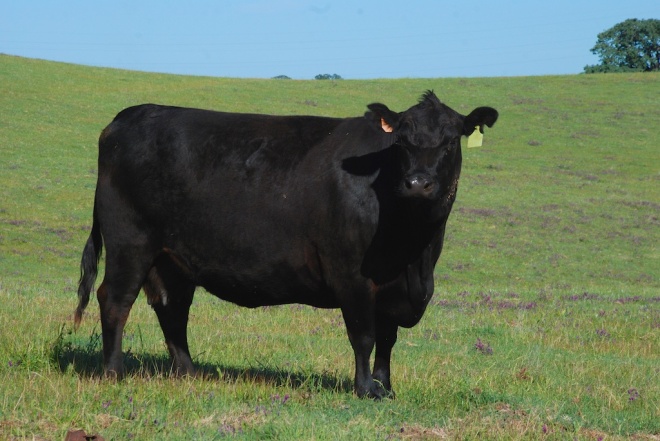 Much of the 2700 acres is leased for cattle grazing.
Much of the 2700 acres is leased for cattle grazing.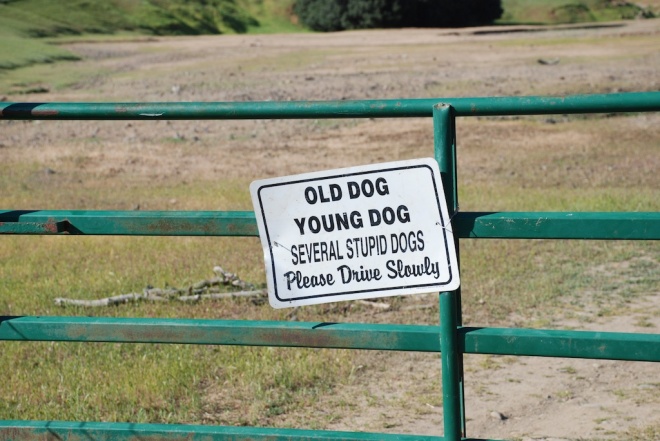 The last gate before the ranch headquarters.
The last gate before the ranch headquarters.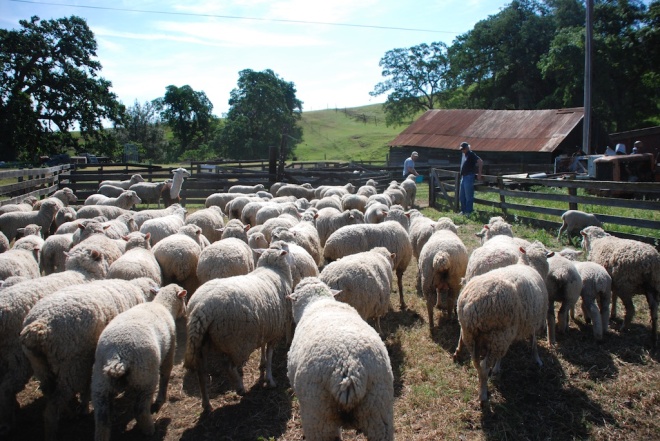
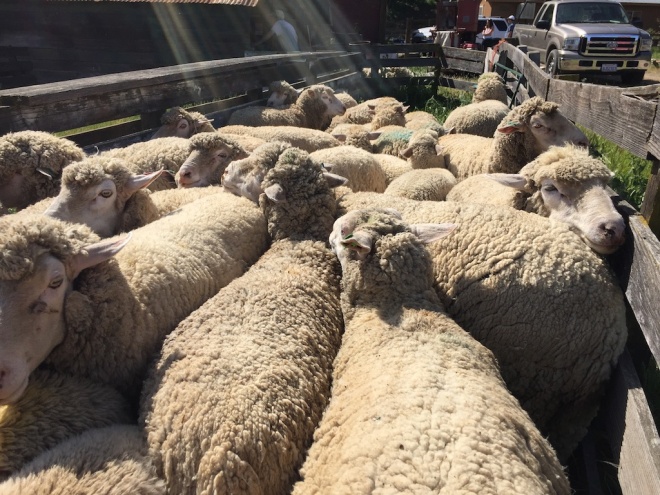
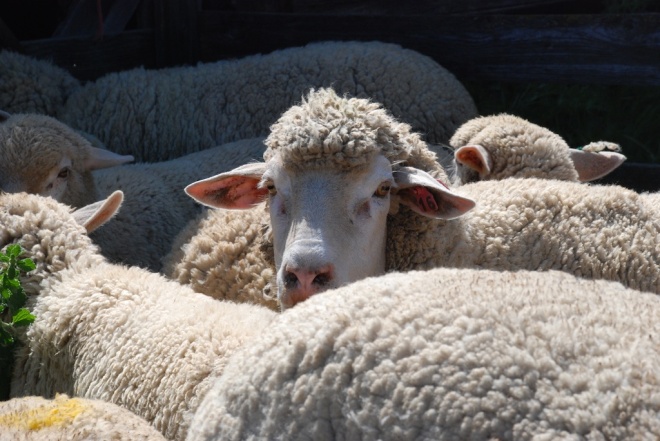
 The sheep are brought into the barn (on the left)…
The sheep are brought into the barn (on the left)…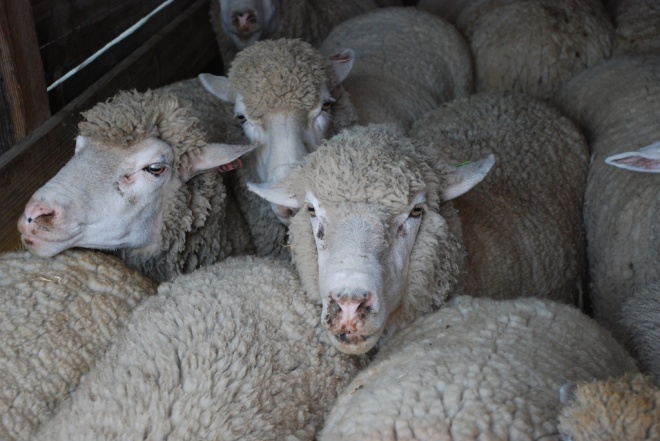
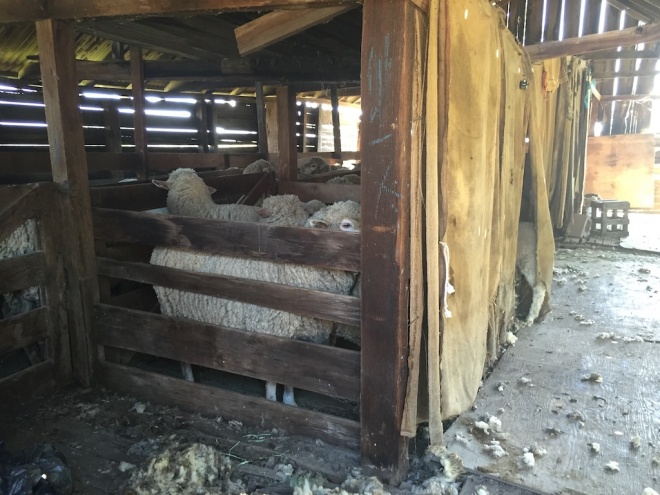
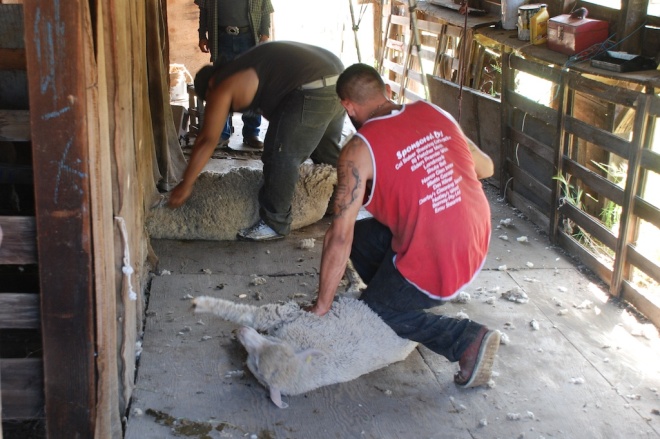
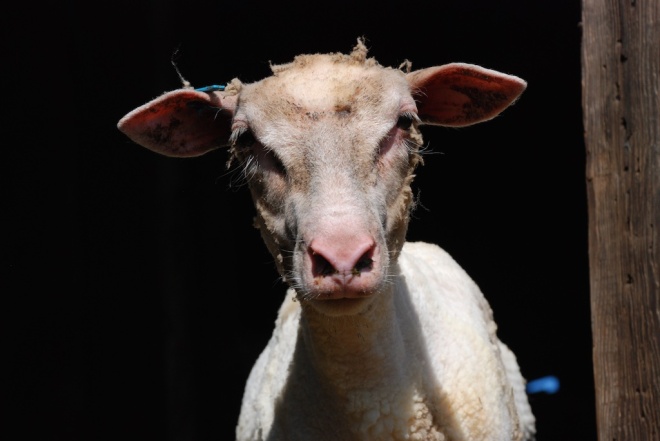
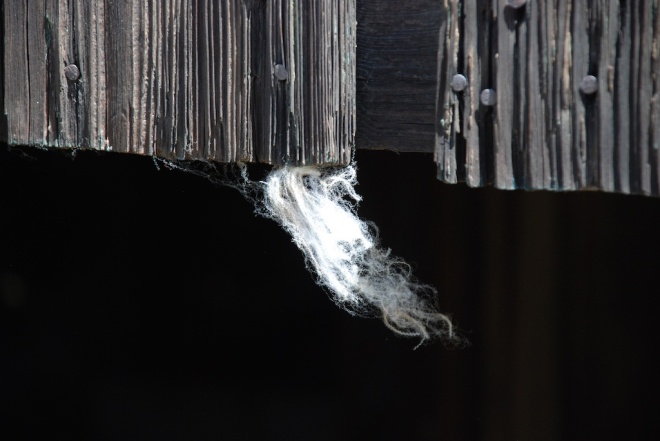
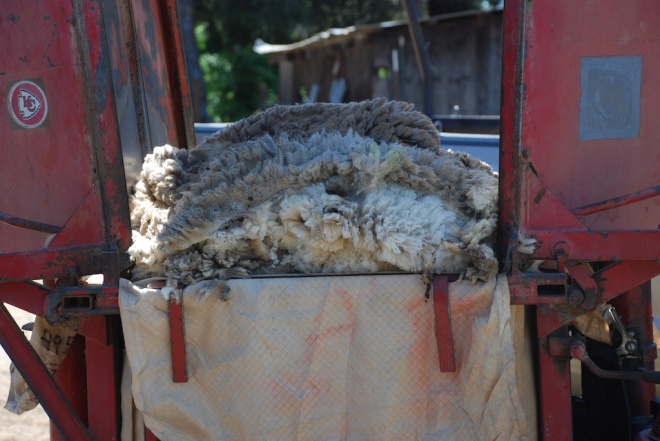 These bales can weigh 300-400 pounds.
These bales can weigh 300-400 pounds.